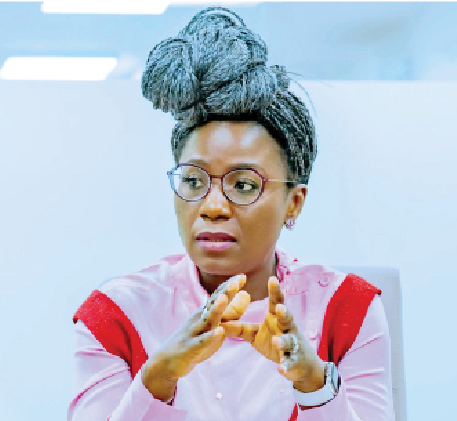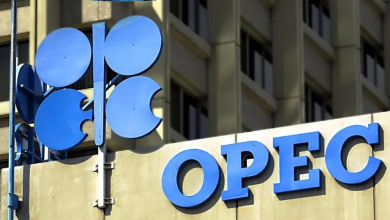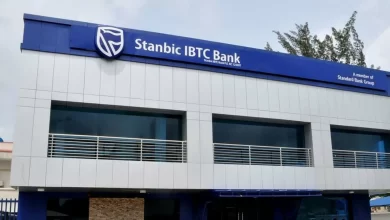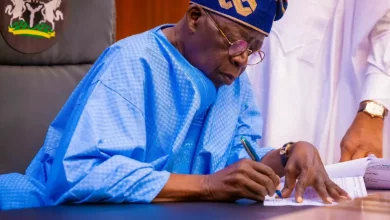We Are Dismantling Energy Logjam To Improve Sector – Verheijen

What inspired your push for the presidential directive? And how did you get the buy-in of the president?
Even before President Bola Tinubu assumed office, we needed to understand the root cause analysis of why we were where we were in the energy space beyond crude theft. Crude theft was mostly discussed at the time because at the time we started looking at this, we were then at the lowest point around 900,000 bpd from over 2 million bpd. The main impact of crude theft was the fact that we had to shut in production every time vandalism occurs on a major trunk line, so we had a lot of shut-ins because the integrity of the transportation or evacuation infrastructure needs to be making sure that we are producing a safe and reliable infrastructure. We said let’s take a major trunk line in the Delta, which was the TNP, for example, and we noticed that a lot of the work that NNPC had done had yielded significant outcomes there. The uptime of the infrastructure is quite high, and most barrels that are injected into those pipelines make it into the terminals. When you looked at the East, you found out that that wasn’t always the case, and that was more urgent because a lot of the associated gas goes into NLNG from the East. We needed to focus on major trunk lines that take gas and oil and see if we can quickly put a crack team together and focus on the issues there and start making improvements and start getting immediate traction. When we looked at it, we realised that there were few interventions with the NSA, the president himself and when the two Ministers of Defence came on board with NNPC, they started taking a few of the lessons of what has worked in the West and tried to replicate it or transfer some of those learnings to the East and Central zones. We have seen improvements there in terms of the availability of crude in that pipeline, and it has gone up.
What of the gas space? How are you dealing with issues there?
We are able to do the same. One of the outcomes is that we are able to see that NLNG’s output or availability went from an average of 53 per cent in 2022 to close to 70 per cent in the first quarter of this year, so that means more income back to the federal government for further investment. Instead of an activity based approach, spending a lot of money not really understanding what your outcomes are, we are able to see direct correlations between the activities that we are undertaking as a government that’s yielding the desired outcomes. More barrels into the terminals that we can export and more gas into the domestic market for power and industrialisation and more LNG cargoes making it into the market so that we can earn the dividends that are required for foreign exchange to just stabilise the macro-economic environment. The work isn’t done there, but there have been significant improvements. That is on the security side.
What other constraints, apart from security, have you identified as slowing down growth?
When we look into the rest of the issue, there were other issues that are driving the reduced production numbers. Again, we noticed that despite holding significant volumes of Africa reserves, over the last 10 years, we have only been able to attract four per cent of the capital that has been spent on the continent on oil and gas. So we started looking at that because it has many implications. What it means is that even if we do not have crude theft, and we are able to solve the crude oil problem and make progress in that regard, if we don’t attract capital, oil and gas may not really buoy our economy because they will not last forever. So you need to continuously invest to even maintain your profile, to stem the climb, and grow production. The second leg of the issue was why we are not able to attract investments and why we are not competitive given the size of our resources.
What did you discover?
We looked at investments over the last 10 years, and all we have been able to attract is $300 million. When you look at places like Ghana where you see over $12 billion (because of the operating environment). That seemed off to us, because, ideally, the biggest resource holder should be attracting more and we tried to understand why that wasn’t happening and we found a few issues which are really around investment climate and that’s why we decided to zero-in on those additional interventions and said what are the main issues harming investment in the country, how do we make sure that this is a conducive and competitive investment climate for capital, so that when investors are looking for opportunities and financiers are looking for opportunities across the globe, they will say Nigeria is one of the most attractive options and then they are able to allocate more capital to Nigerian projects.
We found two things that we thought would significantly address this investment climate challenge. The first one was around cost. We found that the cost of doing business in Nigeria is quite high, and in the oil and gas space, the benchmark as to other climates is high. If you look at Saudi Arabia, they produce oil at less than $5 a barrel. On average, some of our producers here go over $ 40. It doesn’t make us attractive.
Why is that the case?
It is the subject of the presidential directive. We found a lot of issues. One of the things that we found was that our contracting timelines take too long. To put a contract in place whether you want to drill a rig or drill a well or do anything in the oil and gas sector, we found that sometimes it can be as high as 38 months to actually pull that contract. That contracting cycle, for many reasons, we thought this is one of the quick wins because once the amount of time is extended, you’ll need to do anything when the costs go up because its base are expiring and you have to come back, you are missing cycles and low cycles, opportunities, to lock-in prices and move. Many will go to where contracting timelines are less.
Did you say 38 months?
Yes! That definitely adds to the cost and, more importantly, it just makes you unattractive when people can move to other climates within three to six months. Some places do it in less than two months. If it takes up to 38 months, that is one of the reasons for investors to go elsewhere. But we are already working on that, and the contracting time, based on what we have put in place, would never take that long, not even half the time. I know you have heard many times that people say Nigeria is more of a gas country than an oil country, but you wonder why despite us being the sixth largest energy exporter, but when you look at the amount of gas that we consume domestically or how much of that gas that we export, you will find that we are a very distant sixth. So we started to ask ourselves how we can become the dominant gas players that we should be. But we said let’s start with stimulating the upstream gas supply. If you are able to demonstrate that our gas is just as attractive as gas in the US or Europe, then we should be able to attract the necessary capital to unlock that gas supply. But why focus on gas supply? Because it is for export. If you want to build an energy train, the first thing your financier would ask is, “Do you have your supply secured?” And you won’t have your supply secured if the upstream person doesn’t think it’s attractive if there are other opportunities. So PIA has done quite a bit in making sure that associated gas and most gas fuels that have some liquid within it are competitive for investment. When it comes to non-associated gas, which is now 50 per cent of our remaining reserves, we need to do more. You need to start building a robust, non-associated gas portfolio so that you are a lot more reliable as a supply source in the market. So we started looking at what was required to improve non-associated gas fuels so that we could attract capital to those projects as well. There are a few principles that we thought were really important.
All these efforts may never be appreciated if people do not see things on the ground?
We assume that this year, you will see a number of big projects announced because of these directives and many other actions that are being taken on the NNPC side around security. There are quite a lot of things that are happening, but because of these directives, we think that if you have addressed efficiency, this is now the fourth directive that the president assigned. By using directives, it is also signalling a sense of urgency because we could have waited to put all of these things into law, but we know how long the PIA took. Our president, Bola Tinubu, is signalling to investors that Nigeria is open for business and he is willing to take any action that is required under law to make sure that sense of urgency and our openness for business is well-understood and documented that was one of the reasons we went to the presidential directives mode so that it is something that people can use to make immediate investment decisions before the laws are passed.
Nigeria has always had great ideas, but implementation remains a challenge. How is this being addressed?
On the presidential directive, Nigerians are wary of big announcements that do not yield anything. We don’t have a shortage of good ideas. Execution is where we tend to struggle. With the presidential initiative, one of the things that was really important that we demonstrated was not just the ability to come up with novel and interesting ideas that we think can unlock investments, but to actually go after implementation and execution of those presidential directives to yield the intended outcomes.
So, his role as the finance minister and coordinating minister of the economy, he needed to play a part?
Yes. Because those ones were fiscal incentives and he is in charge of fiscal policy. So, he helped integrate the directives that had been done by the different agencies involved in that space so he could issue a fiscal guideline. That was done on Tuesday. We have commenced the next phase and made a presentation around how to resolve some of the issues in the deep water as well as to make sure that we continue to be an attractive destination. In addition to that, there are a number of projects that we are using as a template to push through this directive and implement this directive so that the intended outcome of making sure that we reverse this 10 year decline around investments is ongoing.
A lot of explaining still needs to be done because once Nigerians hear that the government has put some policies in place and the results would be wonderful, they immediately want results
Investments don’t necessarily yield production growth, so I know most Nigerians look at the dollar to Naira exchange rate. Will this investment immediately impact that? No, but in some ways, they actually help us start the economy. There haven’t been a lot of projects. The last big deep water project was in 2013, and there has been no major investment since then. There are a lot of contractors, people who supply water, people who train staff, a lot of businesses that have been idle and shut down and we are able to restart economic activities, and that helps generate income for Nigerians in the meantime.
So, getting it right is very key?
You’re right. Nigerians need to understand what President Bolan Tinubu is trying to achieve here. In a year or two, most of what we are doing now would yield massive results. If we are able to ensure that the domestic power plant is able to be paid by a domestic distribution company. The distribution company in the power value chain needs to be able to collect cost reflective tariff, pay everybody along the chain including the transmission company and generation companies and then allow the gas supplier to be paid, the effect on the economy would be so massive that most of what we are complaining about today would be forgotten.
In the area of power, the issue of grid collapse has become a major problem…
(cuts in) Even before we get to the grid, you will see why we focus on the distribution end of things. Installed capacity in the country is about 15 gigawatts, and we can continue to add. NNPC has a few initiatives where they will continue to add more supply to the grid. On the transmission end, we have a capacity of eight gigawatts, but we really haven’t been able to hit those numbers for a number of reasons. Even if we fixed that, the distribution end has not been able to distribute more than four gigawatts over the last 10 years. If by some magic wand you make sure that your grid is stable and you are able to evacuate the eight gigawatts that are in store or start to grow it, the distribution end cannot take it because the investment required to distribute to more end users has not occurred. That is why we focused on that distribution and ended with a number of initiatives to make sure that we improve the capacity for them to distribute more energy. On the transmission grid size, it’s another grid size. It is another focus. There is another presidential power initiative that the minister is driving that focuses on how to make this grid stable and smarter. He is spending quite a bit of time with his team focused on that section of the value chain.



